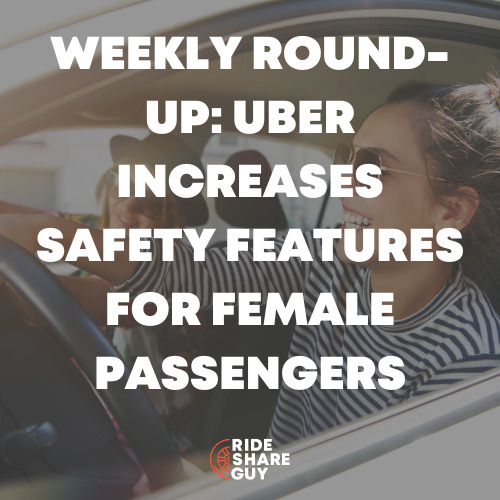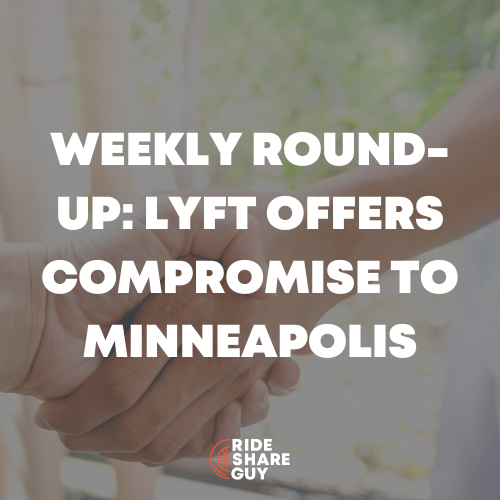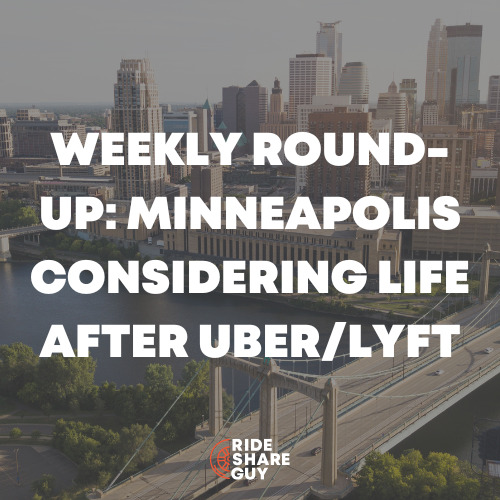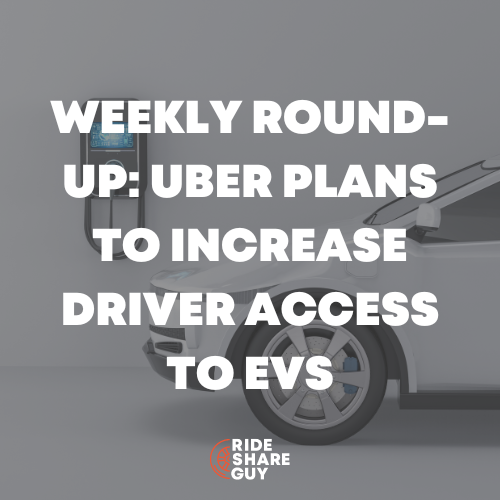In a new blog post, Uber announced it will become a ‘fully zero-emission platform by 2040’, with 100% of rides taking place in zero-emission vehicles. In addition, Uber also announced it’s setting a goal to have 100% of rides take place in electric vehicles by 2030. How does Uber plan to do this? Senior RSG contributor Paula Gibbins breaks down the news.
Uber is looking to reduce emissions of vehicles used on its platform to zero. Recently, Uber announced it is working to reach its goal on an accelerated timeline. The goal is to be 100% emissions free by 2040 with large strides being taken by 2025, with the ultimate goal of 100% of rides taking place in electric vehicles by 2030.
Here are Uber’s four “key actions” in how to make this possible:
- Expanding Uber Green to make it easier for riders to choose to travel in hybrids or EVs.
- Committing $800 million in resources to help hundreds of thousands of drivers transition to EVs by 2025.
- Investing in our multimodal network to promote sustainable alternatives to personal cars.
- Being transparent and accountable to the public along the way.
Uber has already been implementing change in Europe with a Clean Air Plan in place in London and another starting soon in France. The next steps are to take similar action in the United States and Canada.
If this news sounds familiar, it could be because Lyft announced a similar goal earlier this summer: Lyft Announces 2030 Goal of Transitioning Platform to Electric Vehicles
Related articles:
- The 5 Best Electric Vehicles for Uber and Lyft Drivers
- The Cheapest Electric Cars in 2021
- Drivers Ditch Gas Guzzlers For EVs: Could This Be Your Next Move?
Why is Uber Announcing a Commitment to Zero Emissions?
It sounds like Uber is looking to make this as smooth a transition as possible toward zero emissions. This is, in part, because of the Paris Climate Agreement and the state of California’s emissions goals.
In their announcement, Uber attributes the coronavirus and subsequent decrease in pollution amounts as one reason they wanted to pursue the zero-emissions goal, but chances are it’s more complicated than that.
In July, the California Air Resources Board (CARB) proposed requiring that 60 percent of miles traveled by ride-hail passengers be in electric vehicles by 2030” according to Wired. This would ‘force the companies to get about one-third of their drivers into electric vehicles by the end of 2030.’ California plans on setting these rules by January 2021, which incentivizes Uber to move quickly and get drivers used to the upcoming changes.
Overall, 60% seems more feasible at this point than 100% because it would allow some drivers to continue driving with their current vehicles, allowing them to decide to transition or not.
You may be wondering: will Uber force me to get a new car to remain a rideshare driver? If you don’t currently have a hybrid or electric vehicle, no, you will not be forced to get a new car to continue driving for Uber (or Lyft) tomorrow. However, it’s very clear that Uber and Lyft are committed to rewarding drivers that do switch to electric cars.
If you’re up for a new car in the coming years, you may want to seriously consider a hybrid or electric vehicle if you want to continue rideshare driving (even if you just do it casually). Again, it’s not a requirement from Uber or Lyft right now, but the trend is clear.
Uber Green Announcement: A New Way for Hybrid and EV Drivers to Earn More
As far as drivers are concerned, Uber is incentivizing the switch to hybrid or all-electric vehicles.
Uber stated:
“Drivers who choose to drive greener and electric vehicles will earn extra money with each trip. In the US and Canada, hybrid and EV drivers will receive an extra $0.50 directly from the rider on every Uber Green trip completed.
Since our goal is to ultimately transition all drivers to zero-emission vehicles, drivers using a zero-emission vehicle (namely, a battery EV) will receive an additional $1.00 for every trip they complete in the US and Canada. This means that battery EV drivers will receive both incentives—a total of $1.50 extra—for every Uber Green trip they complete.”
Starting today, Uber Green will be available in:
- Chicago
- Denver
- Los Angeles
- San Francisco (includes San Jose)
- Santa Barbara
- Orange County
- Seattle
- Portland
- Ottawa
- Waterloo region (Canada)
- Vancouver
- Toronto
- Eugene, OR
- Madison, WI
- San Diego
On the rider side, riders can select a hybrid or EV ride for $1 extra. By the end of the year, Uber Green will be available in over 65 cities internationally. Riders will be incentivized to choose these green rides over traditional rides, as Uber will reward them with 3X points for every trip taken, compared to 2X points for a typical UberX ride.
As mentioned above, there is no requirement by Uber for drivers to get a hybrid or electric vehicle. While this is Uber’s goal, obviously since drivers are not employees, there can be no requirement. However, if drivers are interested in and/or planning on purchasing a hybrid or EV, Uber plans to help drivers find affordable solutions for the transition through market-based solutions and by partnering with local governments.
Uber is also looking to partner closely with public transportation and other more efficient methods of transportation, including e-bikes and scooters. Uber is working on implementing a way to show passengers where public transit stops and locations are and how to get there within the Uber app so after their Uber trip they will be able to see next steps to get where they need to go.
The option within the app will be called UberX and Transit: “Starting in September 2020 in Chicago and Sydney, riders can tap this option and plan their entire journey, combining UberX with walking directions and city bus, subway, or train connections.” As a rider, this looks great – how many times have you been in a new city and wanted to take transit, but worried about getting somewhere on time, how much it might cost, and knowing which stops to pay attention to? UberX and Transit answers all of those questions and connects riders to drivers for distances where public transit doesn’t exist.
This will help shorten rides and possibly eliminate trips that are under a mile and thereby reduce the carbon footprint.
Driving an Electric Vehicle
As we mentioned in our Lyft announcement regarding the shift to electric cars, should drivers (eventually) switch entirely to electric vehicles?
Here at The Rideshare Guy, we’re fans of hybrids and electric vehicles (in fact, senior RSG contributor Gabe, Managing Editor Melissa and founder Harry all drive either electric or hybrid vehicles). In our research, we found that a 2011 Toyota Prius is your best, most economical choice as a driver (in our 2018 article ‘Is the Toyota Prius the Best Car for Uber & Lyft Drivers?’).
Since then, the EV options have gotten better and better, and in our latest article on EVs, we came down in favor of the Chevy Bolt EV as the new ‘best EV for rideshare drivers’.
We even put together a spreadsheet to determine the best EV and vehicle options for drivers.
Putting all this data together yielded some surprises. The first is that thanks to the cheap price of gas, for most places in the United States, a good used hybrid will be the most economical way to drive.

However, prices continue to decrease for electric vehicles. In our article last year, senior RSG contributor Gabe Ets-Hokin noted (updated), “I’m seeing [Chevy Bolt EVs] with fewer than 40,000 miles on Autotrader for under $17,000, but additionally GM dealers are offering as much as $8,500 in cash back on a new one! Combined with state and local incentives as well as dealer discounts (sadly, the Federal tax credit expired in March), you could steal a new Premier model for a net cost of under $25,000.”
Uber Green Initiative Program
Since we first announced this initiative in September, Uber has added more information about Uber Green and their Green Initiative programs, including:
- Fast charging discount programs with EVGo
- Home charging package discounts with Enel X
- Home solar and battery storage discounts with SunRun
And more – you can read the full list here. We’re looking into how this could affect electric vehicle drivers, but so far it looks like EV drivers will not be able to do the Green Initiative program and Uber Green at the same time. Plus, the max benefit is only $4,000 a year.
As we learn more information, we will update this section. If you’re an EV driver, let us know what you’ve experienced driving for Uber Green so far – email Harry at harry[at]therideshareguy.com.
What This Means for Drivers
It’s admirable, in my opinion. I think anything we can do to better our environment is a good move for the future of the planet and for the future of all of us who live here.
However, I don’t necessarily like being told I have to drive a certain kind of vehicle to drive on the platform. Though, to be fair, Uber already has restrictions, so it’s not all that different from their current standards.
It would be good to know if Uber would allow for hybrid vehicles to help alleviate worries drivers may have about being stranded in the middle of nowhere if their EV runs out of juice. It sounds like at least in the process of the transition, hybrids will be allowed, but there’s no indication of when those will be phased out to allow for 100% EV on the platform.
The biggest obstacle is the price of electric vehicles (though, remember you can get used EVs for a relatively good price), the availability of those vehicles and adequate charging stations. However, Uber does have a long term strategy to partner with city, state and local governments, private companies, and nonprofit organizations to make EVs more attainable, both in terms of cost and access to charging networks.
2040 is still a ways off, so it is not going to make any immediate negative impact on drivers who do not choose to transition just yet.
I’ll be curious to see how many drivers are willing to make the switch and just how easy or difficult it ends up being to do so. I know I want my next vehicle to be a hybrid or EV if for no other reason than gas being more expensive in general than electricity for fueling.
What do you think about this news from Uber? Is your car a hybrid or electric vehicle, or would you choose a hybrid or EV for your next vehicle?
-Paula @ RSG




